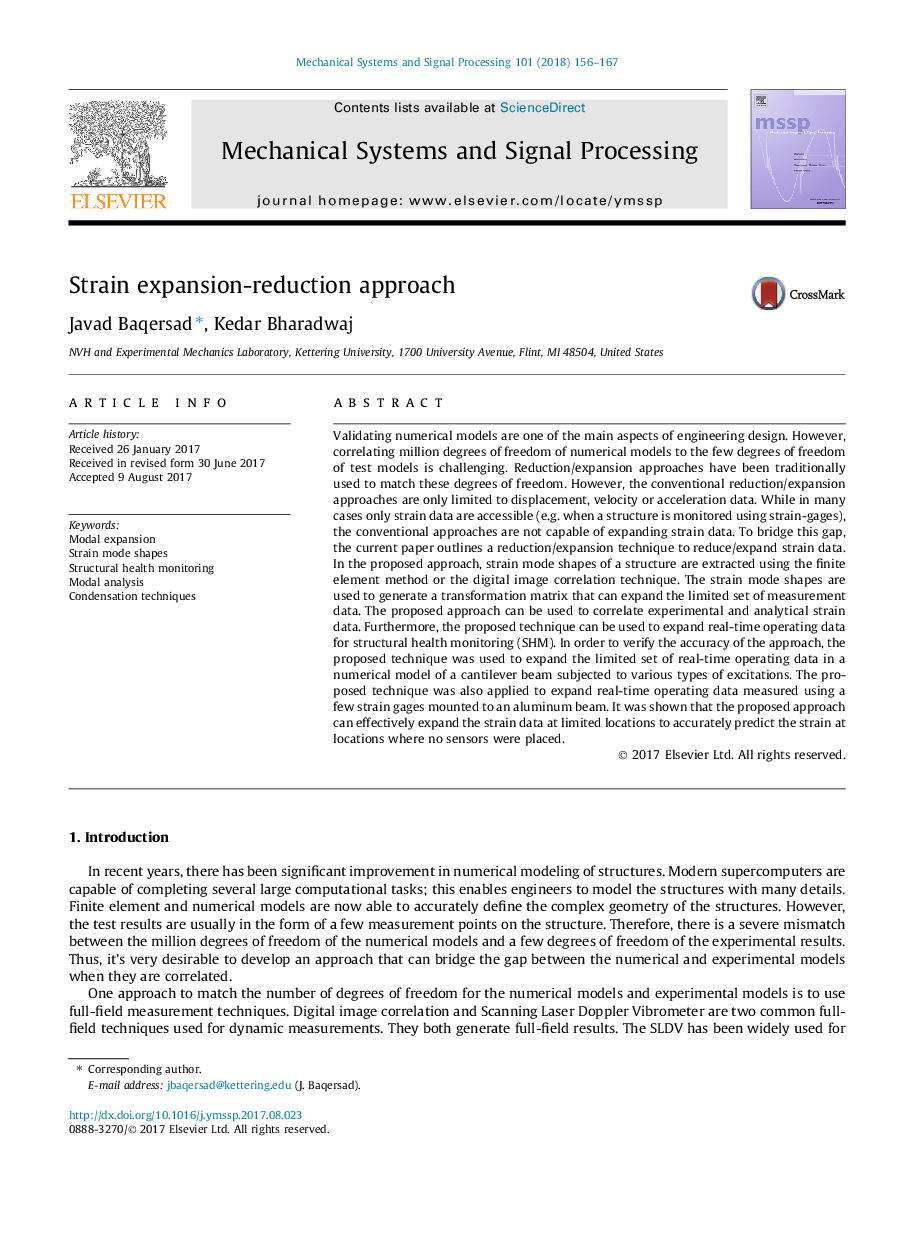| کد مقاله | کد نشریه | سال انتشار | مقاله انگلیسی | نسخه تمام متن |
|---|---|---|---|---|
| 4976595 | 1451834 | 2018 | 12 صفحه PDF | دانلود رایگان |
عنوان انگلیسی مقاله ISI
Strain expansion-reduction approach
ترجمه فارسی عنوان
رویکرد توسعه و کاهش فشار
دانلود مقاله + سفارش ترجمه
دانلود مقاله ISI انگلیسی
رایگان برای ایرانیان
کلمات کلیدی
توسعه مودال، شکل حالت شکن، نظارت بر سلامت سازمانی، تجزیه و تحلیل مودال، تکنیک های چگالی
موضوعات مرتبط
مهندسی و علوم پایه
مهندسی کامپیوتر
پردازش سیگنال
چکیده انگلیسی
Validating numerical models are one of the main aspects of engineering design. However, correlating million degrees of freedom of numerical models to the few degrees of freedom of test models is challenging. Reduction/expansion approaches have been traditionally used to match these degrees of freedom. However, the conventional reduction/expansion approaches are only limited to displacement, velocity or acceleration data. While in many cases only strain data are accessible (e.g. when a structure is monitored using strain-gages), the conventional approaches are not capable of expanding strain data. To bridge this gap, the current paper outlines a reduction/expansion technique to reduce/expand strain data. In the proposed approach, strain mode shapes of a structure are extracted using the finite element method or the digital image correlation technique. The strain mode shapes are used to generate a transformation matrix that can expand the limited set of measurement data. The proposed approach can be used to correlate experimental and analytical strain data. Furthermore, the proposed technique can be used to expand real-time operating data for structural health monitoring (SHM). In order to verify the accuracy of the approach, the proposed technique was used to expand the limited set of real-time operating data in a numerical model of a cantilever beam subjected to various types of excitations. The proposed technique was also applied to expand real-time operating data measured using a few strain gages mounted to an aluminum beam. It was shown that the proposed approach can effectively expand the strain data at limited locations to accurately predict the strain at locations where no sensors were placed.
ناشر
Database: Elsevier - ScienceDirect (ساینس دایرکت)
Journal: Mechanical Systems and Signal Processing - Volume 101, 15 February 2018, Pages 156-167
Journal: Mechanical Systems and Signal Processing - Volume 101, 15 February 2018, Pages 156-167
نویسندگان
Javad Baqersad, Kedar Bharadwaj,
